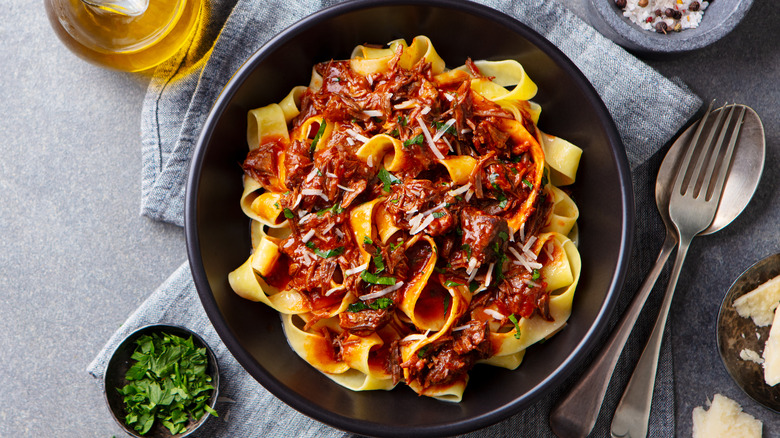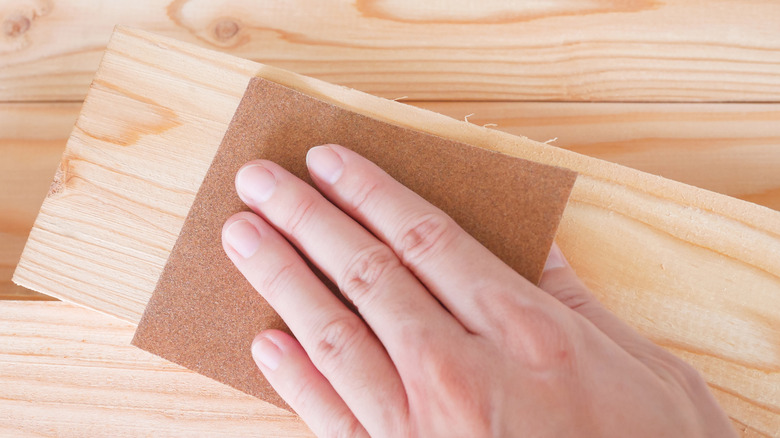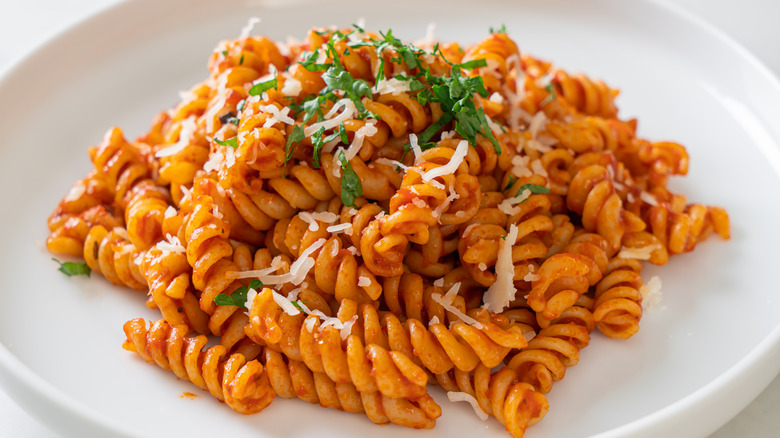If You Really Want Your Pasta To Absorb More Sauce, Hit It With Some Sandpaper
Do you like pasta with plenty of sauce? You're not alone. The only issue is finding a pasta shape that can absorb all of that sauce instead of leaving you to scoop it off of your plate.
Some pasta shapes absorb sauces of all kinds particularly well — their shapes are sticky enough to trap sauce in the crevices. Others are just as useful for less saucy dishes but don't have the right structure for sauces to cling to them. But is there a way to make the less absorptive types of pasta able to soak up sauce?
It turns out, there is. But according to Cook's Illustrated, it's extremely unconventional and requires the use of an item that you likely won't find in your kitchen. Why would you use a hardware store product on pasta? This unusual item will give pasta of all types the perfect texture to hold sauce instead of letting it spill all over your plate.
How sandpaper can change pasta's texture
You probably associate sandpaper more with home repairs than you do with cooking, but taking sandpaper to pasta is a surprisingly effective way to give it a texture that can hold sauce well. (If you're wondering if this is a safe way to texturize pasta, it is. But according to Cook's Illustrated, you need to use nontoxic garnet sandpaper instead of aluminum sandpaper, which contains toxins.)
Cook's Illustrated put this method to the test with a rotary sander, and the results were surprising. Once the sandpaper was applied to the pasta — fettuccine was the pasta of choice because its flat shape and lack of grooves make it easy to sand — there was a marked difference in the pasta's texture. Fettuccine doesn't always hold sauce easily, but with this smooth-to-rough texture change, it can hold more sauce.
You might not rush to your local hardware store to get a rotary sander for your fettuccine, but it's proof that when it comes to sopping up sauce, the texture of the pasta matters.
The best types of pasta to hold sauce
All pasta is good pasta (at least, we think so), but some types of pasta work better with particularly saucy dishes. Although the type of sauce you make will probably dictate the type of pasta with which you pair it, pasta with grooves or "cup" shapes tend to hold sauce especially well.
Fusilli, rotini, tubini and orecchiette are prime contenders for holding the most sauce because they have openings or notches that allow sauce to stick. If your primary concern when making pasta sauce is making sure it stays on the pasta, use one of these types to trap the sauce in. Spiral pasta is extremely "sticky" because there are several tight curls on which sauce can cling, while orecchiette has a larger opening than most other pastas, giving you a "sauce cup." Although each type of pasta works go best with different types of sauces — fusilli and rotini work well with pesto sauces, tubini is great on ragu, and orecchiette traps vegetable sauces well — they'll each keep the sauce exactly where you want it.
Sandpaper can be used to help pasta hold more sauce, but it's far from the only sauce-saving method.


